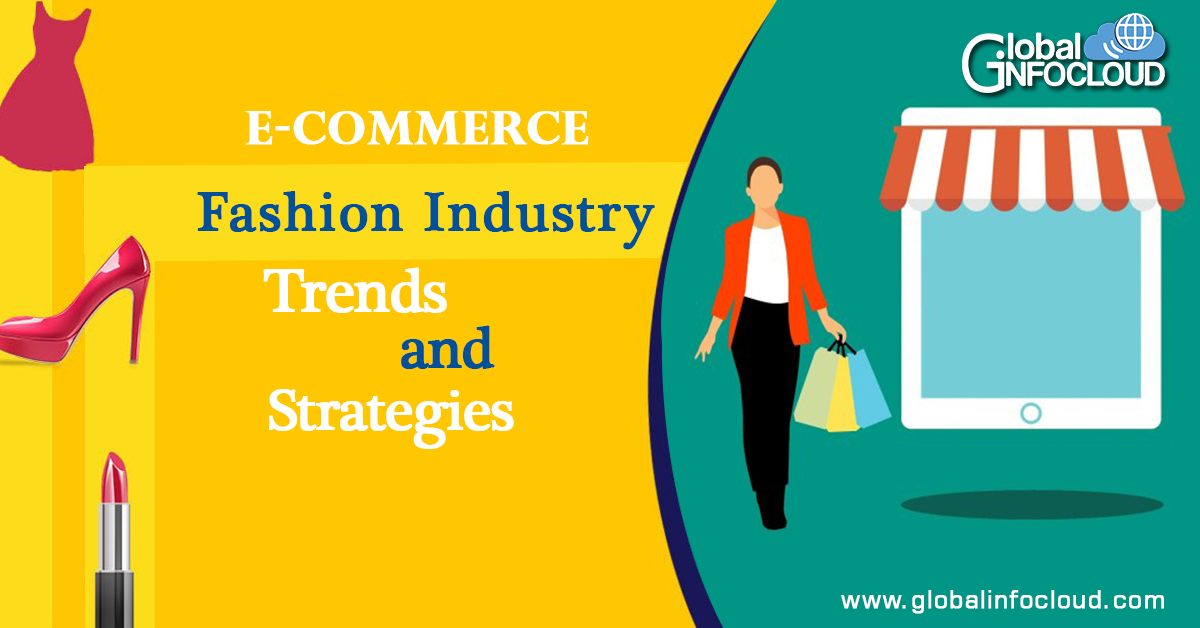The Internet has made the world a smaller place and businesses have been using e-commerce to do business since the 1960s. However, in the past decade e-commerce has experienced a booming growth all over the world, including developing countries. It helps both small and large businesses to cater to a global market without any substantial investments.
The fashion industry is as vast as it is diverse. During the turn of the century, many fashion houses were confronted with two compelling options. The first was to explore the digital world and explore its endless possibilities and boost their brand to unseen heights and the second was to employ their skills to impress their customer base and achieve results by simply creating a business website.
In today’s digital world, any business, no matter how big it may be, is susceptible to become redundant if it is incapable to woo customers on both online and offline platforms. Almost all fashion brands, including the major and high-end luxury fashion brands, run multi-channel strategies to gain customers and increase their sales. Many of these brands have started operating only online, like Myntra or Jabong.
The fashion industry is a significant part of the global economy and e-commerce has made it more accessible around the world. In terms of online sales, a small-time enterprise has equal opportunities as compared to a big fashion retailer. This is the reason many small-time fashion retailers are also able to make it big through e-tailing.
The escalation of globalization, new digital innovations, and changes in customer spending habits has launched the international fashion industry into the midst of chaotic seismic changes.
Here are a few trends and strategies in the e-commerce fashion industry that will give you a general idea where the industry is expected to be heading towards in 2018:
- Sustainability
- Personalization
- E-mail marketing
- Mobile-friendly shopping experience
- Use of social media
- Beneficial technological innovations
- Coordination and cooperation
- SUSTAINABILITY:
According to the Managing Director of Accenture Retail, Jill Standish, millennials and Gen Z’s are becoming increasingly interested in sustainable yet high-quality fashion. This has changed the shopping and spending habits of customers. This has led to brands evolving and making the process of fashion e-commerce more sustainable by remodeling products, online visualization, consumer behavior, packaging material, and delivery options.
- PERSONALIZATION:
Customers want to be unique by identifying themselves with authentic brands and products.
The biggest advantage that online retailers have over physical shops is the readily available information. It is possible to study every user activity on the website and gain useful insights into consumer behavior. If analyzed and used properly, this data can help to create a more efficient and customized shopping experience, boost retention rates, and even procure repeat orders.
- E-MAIL MARKETING:
Personal customer service and secure purchases through e-mail give online shopping a much more personal touch. Many fashion brands have realized that a well-planned email marketing plan can not only inform potential customers about interesting information and offers but can also support the performance of marketing plans on other types of digital media.
- MOBILE-FRIENDLY SHOPPING EXPERIENCE:
Customers have moved on from browsing on a desktop computer to browsing on a smartphone which has prompted brands to create an excellent shopping experience on the mobile platform.
Mobile applications not only act as a product catalogue and sales point but they also provide information about product development, invite feedback, offer yet-to-be-released products on trial, and collect data on consumer behavior.
- USE OF SOCIAL MEDIA:
According to a report by global market research firm Mintel, over 35% millennials in the US admitted that social media is a top influencer on their decisions to buy certain types of clothes. It has become a trend for users with a large number of followers on Instagram, Facebook, Pinterest, etc. to be wooed by fashion brands to promote their products.
- BENEFICIAL TECHNOLOGICAL INNOVATIONS:
Many fashion brands have started introducing mobile applications which enable users to virtually try on clothes, shoes, and accessories. This helps the brands to collect data from all its customers and provide each of them with a personalized service. They help to provide a less frustrating experience for the shopper they also reduce costly product returns as more than half of online clothes shoppers have returned fashion items they purchased online.
- COORDINATION & COOPERATION:
Supply chain management and e-commerce have caused fashion retail sales to grow in scale. This is because they have started cooperating with online platforms, businesses, and brands while making their supply chain processes more efficient. If this continues, the innovative features of startup businesses will certainly revive the state of major fashion brands in the industry.
The importance of making your fashion brand visible on search engines by the people who want to buy them is as clear now as it has always been. Global Infocloud can help you to reach your desired audience and give a kick start or revive your fashion brand in the most innovative and efficient manner possible.




